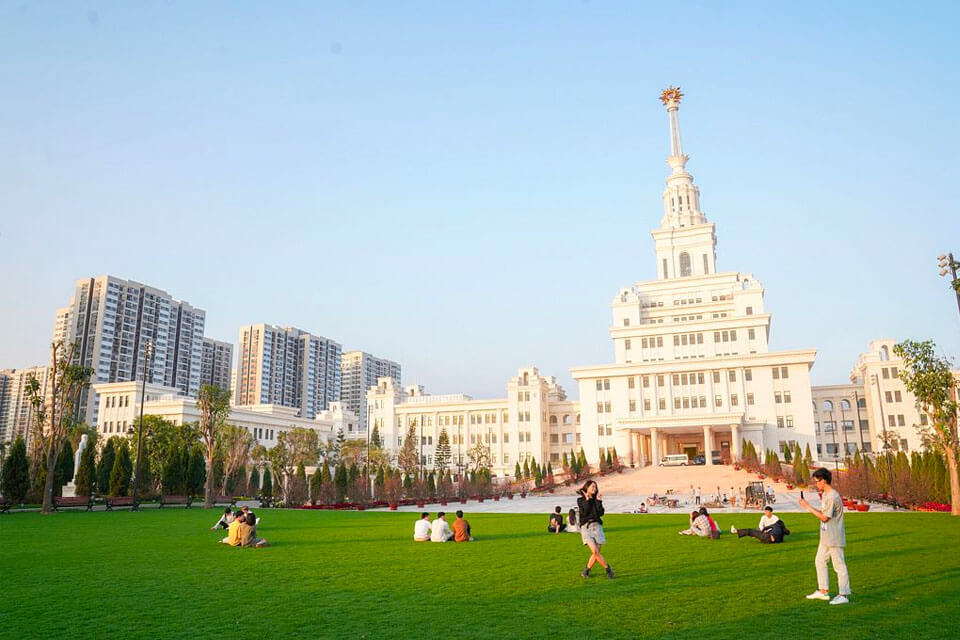
By: B&Company Vietnam
Industry Reviews
Comments: No Comments.
The development of Vietnam non-public higher education sector has been performing well in the recent years. With appealing revenue and profit, there are both increased numbers in students and schools. Despite all the growth in the market, there are still targets set by government that have not been met, indicating the potential is still high for the years to come.

In the last 6 years, the number of universities has been blooming at rapid pace. According to Decision 37 regarding the adjustment of the Master Plan for University and College Network, until 2020, there should be 224 universities in Vietnam. However, with the steady growth in higher education, between 2013 and 2018, the number of universities increased from 221 to 235, exceeded the target set by the government. Particularly, there were 58 non-public universities in 2013, and 65 in 2018. Among them, 5 are 100% foreign invested capital, such as Fulbright Vietnam, RMIT Vietnam and British University Vietnam, etc. Furthermore, there are a lot of universities with foreign capital such as University of Science and Technology of Hanoi (Vietnam-France joint venture), VN-UK Institute for Research and Executive Education, Vietnam-Japan University, etc. All mentioned institutions offer international standard education system and environment suitable for students from middle-class families in Vietnam who can’t afford for their children to go oversea for higher education or foreign families who are living in Vietnam. In parallel of the number of institutions are getting higher, the number of students attending non-public universities also have been on a rise.
Students in non-public universities (Unit: Students)

Source: Ministry of Education and Training annual reports
The reason for continuous investment in Vietnam higher education is due to Vietnam demographic and the nature of this education business (stable growth, lower risk than investing in other sectors). From what gathered with UNFPA’s report, in 2014, 25.5% of Vietnamese is in the range of 16-30 years old, perfect age for many kinds of education, including higher one. According to Vietnam Finance Magazine in 2017, out of the universities that provided data, 77% of them had profit.
With potential profit, organizations have been investing in Vietnam’s higher education. However, there are still considerable barriers that are turning off potential investors. First, organizations must have at least 1 trillion VND (around 4.7 billion Yen) to open higher education institution in Vietnam. Second, the process of obtaining licenses to operate in education field in Vietnam is not an easy task. Foreign institutions must obtain these three types of licenses independently and sequentially.
- The investment registration certificates
- The decision permitting the establishment of educational institutions
- The license for educational activities
And lastly, according to Decree 86/2018/ND-CP on Foreign Cooperation and Investment in Education, investors must comply to Vietnam’s rule on not educating on “sensitive” majors, they include:
- Religions
- Security
- Politics
In addition, they must add Vietnam’s subject such as Philosophy in their curriculum, which can conflict with the original study and teaching plans of foreign universities.
Despite all barriers, companies both domestic and international are still finding ways to invest in Vietnam’s education. For entities who doesn’t want to pay large amount of money, they have chosen a different take on the scene by investing in existed universities or do M&A. For example, Hutech IDC bought University of Finance and Economics HCMC for 100 billion VND (470 million Yen) in 2014, Institution American Education (IAE) invested Phu Xuan University in 2018, etc.
For investors who would want to avoid complicated legal procedure and to utilize existed resources, M&A would be a suitable choice. In 2018, On the other hand, with the advantage of better knowing and handling Vietnam legal procedure, big domestic corporations are building new higher education institutions. S, FLC group invested 4 trillion VND (18.8 billion Yen) to build FLC University in Quang Ninh. Vin Group also invested 5 trillion VND to build Vin University, estimated to finish in 2030.

VinUni University campus
Even with all the hastily race to invest in higher education, there is still place for the market to grow. Vietnam’s population is still growing, from 92,695 million in 2016 to 94,666 in 2018. Furthermore, according to Resolution No. 35/NQ-CP on strengthening the mobilization of social resources for investment in education and training development in the period 2019 – 2025, the government aimed that in 2025, the number of non-public universities will take 30% out of total, and their students will account for 22.5%. Data gathered in 2018 suggested that the number of non-public ones only takes 27.6% and their students only takes 18.2%.
Overall, Vietnam’s higher education market is potential for big players to invest in either in the form of joint-venture, M&A or direct investment by opening their own brand new universities. It is expected to see more players entering this market and there is no sign it will stop any time soon.
References:
- http://tapchitaichinh.vn/nghien-cuu-trao-doi/dau-tu-giao-duc-cuoc-dua-ngan-ty-132542.html
- https://luatvietnam.vn/chinh-sach/nghi-quyet-35-nq-cp-chinh-phu-173365-d1.html
- https://vietnamnet.vn/vn/giao-duc/tuyen-sinh/nhung-con-so-biet-noi-ve-giao-duc-dai-hoc-viet-nam-389870.html
- https://giaoduc.net.vn/giao-duc-24h/viet-nam-da-vuot-so-luong-truong-dai-hoc-theo-muc-tieu-de-ra-post193670.gd
- https://thuvienphapluat.vn/van-ban/giao-duc/Quyet-dinh-37-2013-QD-TTg-dieu-chinh-Quy-hoach-mang-luoi-truong-dai-hoc-cao-dang-196255.aspx
- https://tapchigiaoduc.moet.gov.vn/vi/news/Van-ban-Chi-thi/thong-cao-bao-chi-hoi-nghi-tong-ket-nam-hoc-2017-2018-cac-co-so-gddh-va-truong-su-pham-246.html
- https://vietnam.unfpa.org/sites/default/files/pub-pdf/PD_Factsheet_Age%20%26%20Sex%20structure%20in%20Viet%20Nam_printed%20in%202016_VIET_0.pdf
- https://thuvienphapluat.vn/van-ban/Dau-tu/Nghi-dinh-86-2018-ND-CP-quy-dinh-ve-hop-tac-dau-tu-cua-nuoc-ngoai-trong-linh-vuc-giao-duc-337783.aspx
- https://www.dag.vn/print-stock-636165.da
- https://dautubds.baodautu.vn/khoi-cong-xay-dung-dai-hoc-flc-gan-4000-ty-dong-tai-quang-ninh-d106067.html
- https://duanvincity.hanoi.vn/vinuni/
- https://moet.gov.vn/thong-ke/Pages/thong-ko-giao-duc-dai-hoc.aspx
- https://phuxuan.edu.vn/truong-dai-hoc-phu-xuan-co-chu-nhan-moi/

